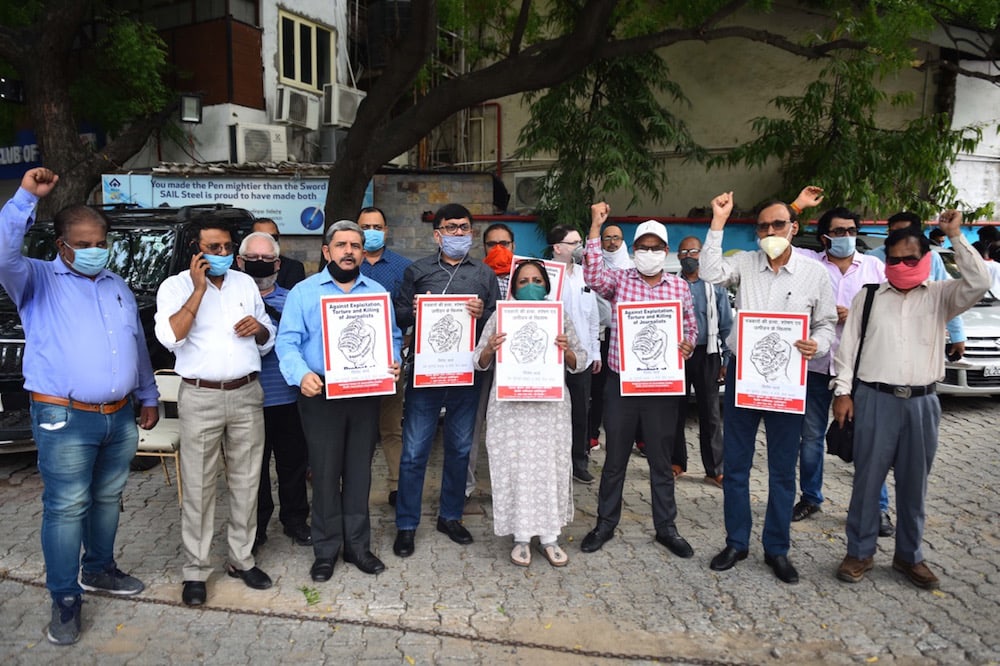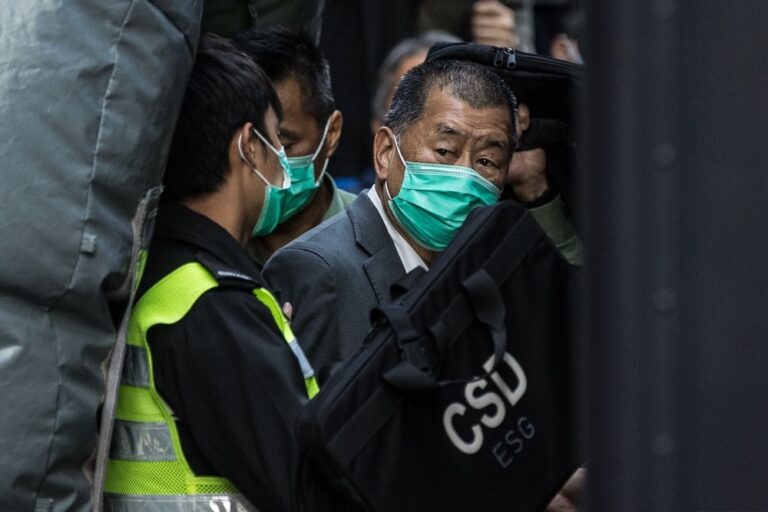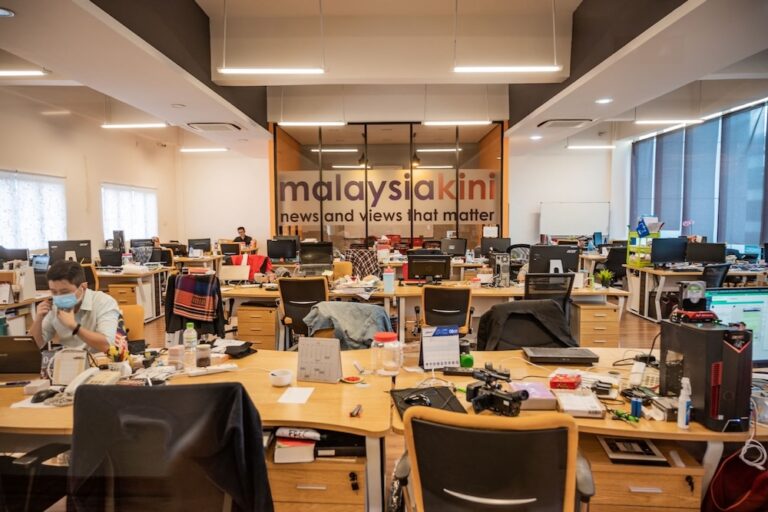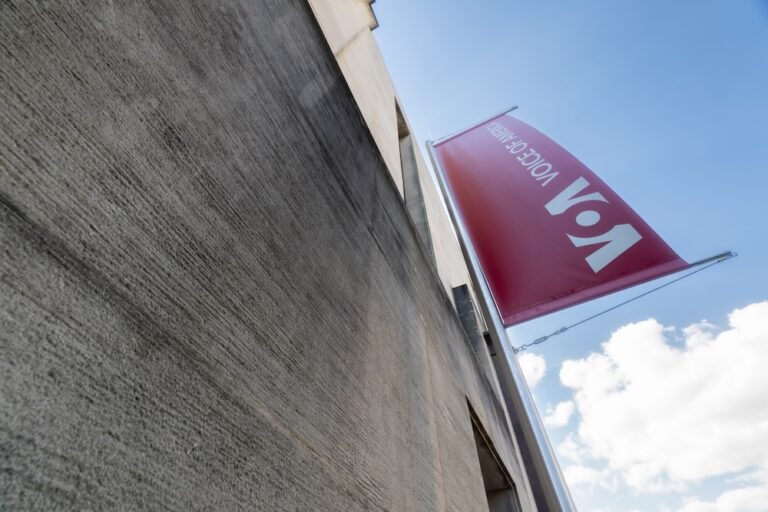According to IPI’s COVID-19 Press Freedom Tracker, nearly 200 violations linked to the pandemic were reported from the Asia-Pacific region, of which 107 were from four South Asian countries: Bangladesh, India, Pakistan and Nepal.
This statement was originally published on ipi.media on 29 December 2020.
The COVID-19 pandemic has posed unprecedented challenges and pushed the media into uncharted territory. Across the globe press freedom has been undermined by governments to control the public narrative and cover up their inadequacies. Authorities have clamped down on the media to control information and public debate about the pandemic.
Emergency regulations were put in place, while new and existing laws relating to disinformation and fake news were used to stifle independent media. In several countries, journalists from independent media were denied access to press briefings, access to official information was severely limited and regulations were imposed to compel media organizations to report data provided by the government.
According to IPI’s COVID-19 Press Freedom Tracker, nearly 200 violations linked to the pandemic were reported from the Asia-Pacific region, of which 107 were from four South Asian countries: Bangladesh, India, Pakistan and Nepal. As many as 71 journalists faced arrests and charges for their coverage of the pandemic and its consequences, and 32 cases of physical attacks and verbal threats were reported from these countries.
With 84 cases, India accounted for the greatest number of violations in the region. As many as 56 journalists were arrested or charged under various laws, and 23 journalists came under verbal and physical attacks. The Indian government resorted to various tactics to prevent independent media from criticizing the government and reporting about the pandemic.
In a blatant attempt to stifle press freedom, on March 31 the government unsuccessfully petitioned the country’s Supreme Court to bar the media from publishing information about COVID-19 that had not been cleared by the government. The court refused to intervene but directed the media to “refer to and publish” the official version of the developments.
“In 2020, IPI has observed unacceptable levels of attacks against independent media and journalists in India, Pakistan, Bangladesh and Nepal, a region where press freedom has already been severely curtailed in recent years”, IPI Executive Director Barbara Trionfi said. “Throughout the pandemic, independent journalism has been a vital resource to people and governments’ efforts to control the media message and pre-empt public scrutiny ran counter to the public interest and represented a serious breach of people’s rights.”
“As we look at 2021, strengthening the independent media and protecting journalist safety in the region will be a core aspect to any strategy to counter the effect of the pandemic. Or else, democracy in the region will be severely damaged,” Trionfi added.
In a majority of cases, Indian officials targeted journalists for reporting about the failure of the administration to manage the pandemic. As many as 10 cases were filed against six journalists in the northern states of Himachal Pradesh for their reports about hunger amongst migrant workers stranded due to a sudden lockdown imposed by the government, and criticism of the local administration for the lack of proper food distribution. According to a report, police filed charges after journalists and local politicians got into arguments about their reporting.
The Editors’ Guild of India condemned the police actions and urged the governments to stop using legal tools to harass the press. The statement came in response to the arrest of Dhaval Patel, owner and editor of the Gujarati language news portal “Face of Nation”, who was detained and charged with sedition for writing an article about the possibility of leadership change in Gujarat, the home state of Prime Minister Narendra Modi, due to an increasing number of coronavirus cases in the state.
In neighbouring Bangladesh, government charged 11 people, including journalists and a cartoonist, with spreading false information about the pandemic. Only two of them were taken into custody as others were living abroad. At the time of his arrest, cartoonist Ahmed Kabir Kishore was working on a series of cartoons with caricatures of ruling party leaders and allegations of corruption in the health sector. Another journalist, Sajal Bhuiyan, was assaulted by a government official and his supporters when he raised questions about the shortage of rice in the region owing to the pandemic.
As many as 10 press freedom violations related to COVID-19 were reported from Nepal, including six cases of attacks on journalists and four arrests. Supporters of a local politician attacked Nabaraj Dhanuk, a reporter for Radio Dhangadi ,and picketed outside the office of the radio station following a news broadcast about embezzlement allegedly committed by the politician. At least four journalists were arrested by the police in different parts of the country for reporting during the lockdown, despite the fact that the government had declared media as an essential service.
In Pakistan, the most glaring case of violation was the torture of two journalists by paramilitary forces for their reporting about the squalid conditions in a quarantine centre close to the Afghan border. Saeed Ali Achakzai and Abdul Mateen Achakzai alleged that they were summoned to the command centre for the Frontier Corps and handed over to the anti-terrorism task force. They were taken to a prison and assaulted. The officials of Qala-e-Abdullah district claimed that the journalists were arrested for spreading fake news and disrupting public order.
Furthermore, eight journalists were killed in targeted attacks in the region in 2020. In India at least five journalists were killed for their work, whereas in Pakistan two journalists died in attacks by unidentified gunmen. In Bangladesh, a journalist was killed for his reporting on drug and illegal gas connections. Three persons were arrested for the murder.



